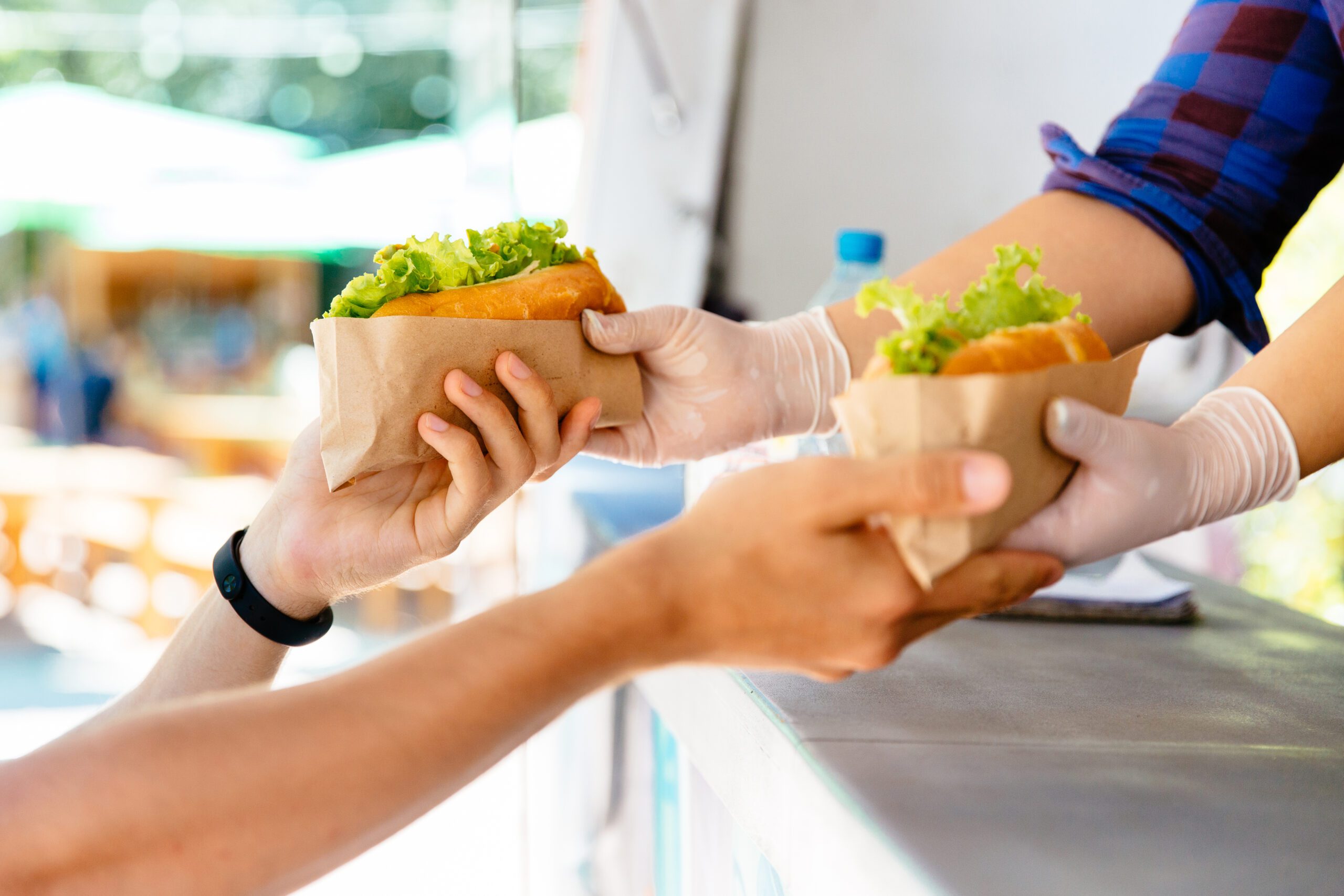
What’s the Buzz About Mobile Food Trucks ?
Mobile Food trucks are like restaurants on wheels. They are mobile eateries that serve up a wide range of delectable dishes, from gourmet burgers to exotic international cuisine. These culinary vehicles have taken the world by storm, offering a unique dining experience that combines convenience, variety, and affordability.
If you’re a food enthusiast with a penchant for creativity and entrepreneurship, starting a food truck business could be your recipe for success. It’s a thrilling adventure that allows you to take your culinary passion and turn it into a profitable endeavor.
Table of Contents
- Introduction
- What’s the Buzz About Food Trucks?
- Finding Your Culinary Passion
- Discovering Your Niche
- Market Research: What’s Cookin’ in Your Area
- Evaluating the Local Food Scene
- Legalities: More Than Just Cooking
- Permits, Licenses, and Regulations
- Choosing the Perfect Food Truck
- The Heart of Your Business
- Setting Up Shop: Location, Location, Location
- Maximizing Foot Traffic
- Kitchen on Wheels: Outfitting Your Truck
- Equipments and Design
- Sourcing Ingredients: Fresh is Best
- Building Relationships with Suppliers
- Creating Your Signature Food Truck Menu
- Unique and Delicious Dishes
- Pricing Strategies: Finding the Sweet Spot
- Balancing Profit and Affordability
- Hiring Your Dream Team
- Chefs, Servers, and More
- Marketing Magic: Spreading the Word
- Social Media and Branding
- First Impressions Count: Quality Customer Service
- Building a Loyal Customer Base
- Managing Finances: Tracking Your Dough
- Budgeting and Financial Management
- Food Safety: Keeping It Fresh and Safe
- Maintaining High Hygiene Standards
- Dealing with Competition: Staying Ahead
- Outsmarting Other Food Trucks
- Weathering the Storm: Adapting to Challenges
- Overcoming Obstacles
- Expanding Your Fleet: Growing Your Business
- Scaling Up
- Food Truck Essentials at Festivals: Networking and Profit
- Participating in Culinary Events
- Customer Feedback: The Key to Improvement
- Listening and Adjusting
- Online Ordering: Expanding Your Reach
- Embracing the Digital Age
- Health Inspections: Staying Compliant
- Ensuring a Clean Bill of Health
- Sustainability: Eco-friendly Food Trucks
- Reducing Your Carbon Footprint
- Investing in the Future: Retirement and Exit Strategy
- Planning for the Long Haul
- Conclusion
- From Passion to Profit: The Food Truck Essentials Journey
Now, let’s hit the road and dive into the enticing world of food trucks.
Discovering Your Niche
Before you hit the road, it’s essential to discover your culinary niche. What type of food do you love to prepare, and what sets your dishes apart from the rest? Finding your niche is the first step in defining your food truck’s identity.
Consider your background, interests, and the local market. Are you a pizza perfectionist, a taco titan, or a dessert diva? Identifying your niche will not only guide your menu but also attract a loyal customer base looking for your unique offerings.
Evaluating the Local Food Scene
Once you’ve pinpointed your culinary passion, it’s time to spend time on market research. Understanding the local food scene is crucial for success. Explore the competition – what types of food trucks are already operating in your area, and what gaps can you fill?
Additionally, assess the demographics and preferences of your target audience. Are they health-conscious foodies, street food lovers, or something in between? Market research will help you tailor your menu to meet the demands of your community.
Permits, Licenses, and Regulations That Go With Food Truck Essentials
Now, let’s get into the nitty-gritty of the food truck essentials business – permits, licenses, and regulations. To operate legally, you’ll need to navigate a maze of paperwork and requirements. This includes health permits, business licenses, and adherence to local regulations.
Ensure you’re up to date with all necessary paperwork to avoid legal complications down the road. It may not be the most exciting part of your journey, but it’s undoubtedly a vital one.
The Heart of Your Business: Choosing the Perfect Food Truck
Selecting the right food truck is a pivotal decision in your culinary journey, as it’s essentially the beating heart of your business. This isn’t merely about buying a vehicle; it’s about finding the perfect canvas to bring your culinary creations to life. Let’s delve deeper into the intricacies of this decision.
Size for Mobile Food Trucks Matters: Finding the Right Fit
One of the first considerations when choosing a food truck is its size. The size of your Mobile food truck will largely determine how much cooking and storage space you have. It’s essential to strike the right balance between having enough space to prepare your dishes and not overcommitting to a vehicle that’s too large, which can lead to higher operational costs.
Consider the size of your potential team as well. Will you have a small, tight-knit crew, or do you envision a bustling kitchen with multiple chefs and support staff? Make sure your food truck can comfortably accommodate your team without feeling cramped.
Layout and Flow: Efficiency is Key
The layout of your food truck’s kitchen is another critical aspect. Efficiency is key when you’re working in a confined space, and a well-thought-out layout can make a world of difference. It should facilitate a smooth workflow, from receiving orders to plating up and serving customers.
Think about the placement of your cooking equipment, prep stations, and storage areas. It’s like solving a culinary puzzle where everything must fit seamlessly. When the layout is well-designed, you can serve more customers in less time, which is a recipe for success.
Condition and Maintenance: A Reliable Companion
Buying a used food truck can be a cost-effective option, but it comes with its own set of challenges. Ensure that the truck you choose is in good condition and has been well-maintained. Regular maintenance is crucial to keep your mobile kitchen running smoothly.
Before finalizing the purchase, have a trusted mechanic inspect the vehicle to identify any potential issues. It’s far better to discover and address any problems before you hit the road rather than during a busy lunch rush.
Customization: Reflecting Your Brand
A food truck isn’t just a means of transportation; it’s a moving billboard for your brand. Customization can go a long way in creating a unique and memorable image for your business. Consider giving your food truck a distinctive look that reflects your culinary style and personality.
From eye-catching graphics to a color scheme that stands out, your truck’s design should make a statement. When potential customers see your food truck, it should instantly convey what you’re all about, piquing their curiosity and drawing them in.
Budget and Financing Part of Your Business Plan: Making it Work
Of course, budget considerations play a significant role in your choice of a food truck. Setting a clear budget from the outset can help you narrow down your options and make a more informed decision. Keep in mind that the cost of the truck itself is just one part of the equation.
You’ll also need to budget for kitchen equipment, customization, and any necessary repairs or upgrades. Financing your food truck business may involve securing a loan or finding investors. Ensure that your financial business plan is well-structured to avoid any surprises down the road.
Resale Value: Thinking Ahead
While it’s exciting to embark on your food truck venture, it’s also wise to think about the future. Consider the resale value of your chosen food truck. You might want to upgrade or change your vehicle at some point, and a truck with good resale value will make that transition smoother.
The condition and popularity of the truck’s make and model can significantly impact its resale value. Conduct thorough research to ensure you’re making a choice that will serve you well in both the short term and the long run.

Maximizing Foot Traffic: A Recipe for Food Truck Success
When you operate a food truck, your success depends on one key factor: location. It’s all about being in the right place at the right time, and this is where maximizing foot traffic comes into play. Here, we’ll explore the art of finding the perfect location to ensure your food truck thrives.
Prime Spots: Where the Hungry Gather
To maximize foot traffic, you need to park your food truck where people congregate. Think about the areas in your city or town where hungry patrons are abundant. Business districts, parks, and event venues are often bustling with potential customers. These are prime spots to set up shop.
Additionally, consider local events and festivals. Food trucks are a staple at such gatherings, so keep an eye on event calendars and secure a spot when the opportunity arises. The crowds that attend these events can provide a significant boost to your sales.
Research and Adaptation: Changing with the Seasons
Understanding your local area is crucial for success. Different seasons and times of the day can significantly affect foot traffic. During the workweek, focus on office districts during lunch hours. In the evenings and weekends, target areas with nightlife and entertainment.
Also, consider the impact of weather. Rain or extreme heat can deter potential customers from venturing outdoors. Be flexible and prepared to adapt your location depending on the weather conditions.
Competition and Collaboration: Know Your Neighbors
While you’re scouting locations, be mindful of your competitors. You don’t want to set up right next to a food truck that offers a similar cuisine. Instead, aim to position yourself strategically, where you can attract customers interested in something different.
Collaboration with other local businesses can also be beneficial. Some areas have designated food truck lots or pods where multiple trucks gather. This collaborative approach can help draw more customers to your location, creating a win-win situation for everyone involved.
Community Engagement: Building Relationships
Maximizing foot traffic isn’t just about location; it’s also about building relationships with the local community. Engage with your customers, get to know their preferences, and respond to their feedback. This creates a sense of loyalty and can lead to repeat business.
Consider participating in community events or partnering with local organizations. These initiatives not only give back to the community but also help establish your food truck as an integral part of the neighborhood.
Social Media and Marketing: Spreading the Word
In the digital age, your presence on social media can significantly impact your foot traffic. Use platforms like Facebook, Instagram, and Twitter to inform your followers about your location and daily specials. Posting mouthwatering photos of your dishes can be incredibly enticing to potential customers.
Consider running promotions or contests on social media to encourage engagement and build a loyal online following. The more people share and talk about your food truck online, the more likely they are to visit in person.
Consistency: The Key to Success
Once you’ve found a location that works for your food truck, consistency is key. Regularly parking in the same spot at the same times can help you establish a dedicated customer base. When people know where to find you, they’re more likely to become regulars.
Maximizing foot traffic is an ongoing effort that requires attention to detail and adaptability. It’s a combination of choosing the right locations, understanding your local area and customer base, engaging with the community, and leveraging the power of social media. When you master this art, you’ll be well on your way to food truck success.
Equipments and Design
Outfitting your food truck kitchen is an exciting phase of your journey. You’ll need to invest in the right equipment to ensure efficient food preparation. The design of your kitchen should optimize workflow and safety.
From grills to fryers, refrigerators to prep stations, make sure you have all the necessary tools to bring your culinary creations to life.
Building Relationships with Suppliers
Sourcing fresh, quality ingredients is the lifeblood of your food truck business. Establish strong relationships with suppliers who can provide you with reliable and fresh produce. Your reputation relies on the quality of the food you serve, so don’t compromise on your ingredients.
Unique and Delicious Dishes for Food Truck Menu
Your menu is your calling card. Craft a selection of dishes that showcase your culinary expertise and your food truck’s identity. Offer unique and delicious items that set you apart from the competition. Whether it’s a secret sauce, a special seasoning, or a signature dish, make sure your food truck menu has a wow factor.
Balancing Profit and Affordability
Pricing is a delicate balance between making a profit and providing value to your customers. Your pricing strategy should be competitive but not so low that it erodes your margins. Consider factors like ingredient costs, location, and the local market when setting your prices.
Chefs, Servers, and More
Running a food truck isn’t a one-person show. Depending on the size and scale of your operation, you may need to hire chefs, servers, and other staff. Choose a team that shares your passion and dedication to delivering a top-notch culinary experience. Your employees should be friendly, efficient, and committed to providing excellent customer service. Happy customers are more likely to become repeat customers and recommend your food truck to others.
Social Media and Branding
In today’s digital age, a strong online presence is crucial for the success of your food truck. Utilize social media platforms to create a buzz around your business. Develop a cohesive branding strategy that includes a catchy logo, eye-catching visuals, and a compelling story that resonates with your target audience.
Engage with your customers on social media, share mouthwatering photos of your dishes, and announce your location and daily specials. Building an online community around your food truck can lead to a loyal following and increased sales.
Building a Loyal Customer Base
First impressions are vital in the food truck business. A warm smile, a quick and efficient service, and delicious food are the keys to building a loyal customer base. Encourage repeat business by offering loyalty programs or discounts for returning customers.
Remember, your customers aren’t just patrons; they’re your brand ambassadors. Treat them well, and they’ll spread the word about your food truck far and wide.
Budgeting and Financial Management
Managing the finances of your food truck is essential to keep your business running smoothly. Create a detailed budget that accounts for all your expenses, from ingredients to fuel and maintenance. Tracking your income and expenditures will help you make informed financial decisions and ensure your business stays profitable.
Maintaining High Hygiene Standards
Food safety is non-negotiable in the food truck industry. Regular health inspections are part of the game. Ensure that your truck meets all health and safety standards, from food storage and preparation to waste disposal. Maintaining high hygiene standards not only keeps your customers safe but also builds trust in your brand.
Outsmarting Other Food Trucks
Competition in the food truck business can be fierce. To stay ahead, you need to outsmart your competitors. This involves offering unique menu items, exceptional customer service, and finding innovative ways to stand out in the crowd.
Consider participating in local food truck festivals or collaborating with other businesses to expand your reach and attract new customers.
Overcoming Obstacles
Every business faces challenges, and food trucks are no exception. Weather, equipment malfunctions, or unexpected events can disrupt your operations. The key is to adapt and find solutions quickly. Having contingency plans in place for such situations is crucial for keeping your food truck on the road to success.
Scaling Up Your Food Truck Profitability
Once your food truck business is thriving, you may consider expanding your fleet. Adding more trucks to your business can increase your reach food truck profitability. However, scaling up requires careful planning and investment. Make sure you’re ready to take on the responsibilities that come with growth.
Participating in Culinary Events
Food truck festivals and culinary events are excellent opportunities to showcase your culinary creations to a broader audience. Participating in such events can help you network with fellow food truck owners and attract new customers. Be prepared to bring your A-game, as competition at these events can be fierce.
Listening and Adjusting
Customer feedback is a valuable tool for improvement. Actively listen to your customers’ comments and suggestions, and be willing to make adjustments to your food truck menu or service based on their input. Continuous improvement is a hallmark of a successful food truck business.
Embracing the Digital Age
In today’s fast-paced world, online ordering has become a game-changer for many food trucks. Embrace the digital age by offering online ordering and delivery services. This can expand your reach and cater to customers who prefer the convenience of ordering from their phones or computers.
Ensuring a Clean Bill of Health
Regular health inspections are a part of the food truck business. Ensuring that your truck is consistently compliant with health and safety regulations is essential. A clean bill of health will reassure your customers and keep your business running smoothly.
Reducing Your Carbon Footprint
Sustainability is a growing concern in the culinary world. Consider ways to make your food truck more eco-friendly. This could involve using biodegradable packaging, reducing food waste, or exploring alternative energy sources for your truck.
Planning for the Long Haul
As an entrepreneur, it’s important to think about the long term. What’s your exit strategy? Are you building a business to sell one day, or do you plan to operate your food truck for the rest of your life? Having a clear plan for the future can help guide your decisions and investments.
12 Traditional Delicious Food Truck Menu Ideas to Drive Business
As a food truck owner, coming up with an enticing menu is key to attracting customers and generating sales. Here are 12 more traditional food truck menu item ideas that are sure to be crowd-pleasers.
- Burgers – You can’t go wrong with a burger on your food truck menu. Offer classic beef burgers along with specialty options like buffalo chicken or black bean vegetarian burgers. Don’t forget customizable toppings and sauce choices.
- Tacos – Tacos are hugely popular food truck fare. Feature proteins like carnitas, al pastor, and fish along with traditional toppings. You could also offer breakfast tacos.
- Pizza – Personal pizza sizes cooked in a mini oven on your truck are very portable. Go with popular topping combinations or allow customers to build their own.
- Hot Dogs – Beyond the basics, get creative with sausages from around the world and interesting condiment combinations. Offer bockwurst sliders, Philippine hot dogs, or chili cheese dogs.
- Bowl Meals – Healthy grain or greens based bowls with a protein like pulled chicken or salmon are filling and customizable. Try Buddha, Cajun, or Mediterranean inspired bowls.
- Sandwiches – Grilled cheese, paninis, and melts always satisfy. For a gourmet twist, utilize artisan breads and unusual fillings like prosciutto and fig.
- Soups – Always have at least one on rotation like tomato bisque, tortilla chicken noodle, or potato leek. Sell by the cup or in keep-it-warm mini thermoses.
- Desserts – Donuts, cookies, brownies or mini pies hit the sweet spot. You could also offer frozen treats like soft serve or gelato.
- Breakfast – On weekends, cater to morning crowds with breakfast burritos, pancakes, waffles or breakfast sandwiches until 11am or noon.
- Vegan/Vegetarian – Leave no one out with plant-based options like chickpea tacos, portobello BLTs or veggie noodle bowls using vegan cheese and dressings.
- Beverages – In addition to the usual drink choices, offer specialty sodas or teas to complement your menu items.
- Kids Meals – Smaller portioned classics kids will love help you cater to families. Think mini corn dogs, sliders or personal pizzas.
With these food truck menu ideas featuring popular and on-trend dishes, your business is sure to succeed at attracting hungry customers!

20 Various Scrumptious Food Truck Menu Ideas to Draw in Hungry Crowds
Choosing what to feature on your food truck menu takes thought to hit the mark with customers. Here are 20 enticing menu concepts to drive sales that will depend on market you serve. Intention is to get you brain storming to provide more options
- Sliders – Mini burgers on slider buns like patty melts, pulled pork or chicken are portable party starters.
- Street Tacos – Carnitas, al pastor and shrimp topped with fresh pico, avocado or pickled veggies satisfy on small fresh corn or flour tortillas.
- Empanadas – Savory or sweet hand pies filled with your choice of chicken, beef, cheese or fruit make a wonderful snack.
- Ice Cream Sandwiches – Essential treats using homemade cookies with premium ice cream filling like vanilla bean or salted caramel.
- Fried Chicken -Tender chicken with signature sauces like honey mustard or buffalo elevate this Southern favorite.
- Burritos – Beef, chicken or vegetarian burritos are handheld meal solutions and travel well for on-the-go customers.
- Mac and Cheese – Customize with mix-ins like bacon, broccoli or lobster to uplevel the ultimate comfort food.
- Quesadillas – Grilled tortillas with melted cheese and choice of protein like shredded chicken or steak hit the comfort spot.
- Donuts – Fresh-made specialty flavors beyond the usual like maple bacon, Oreo or fruity cereal elevate this sweet breakfast or afternoon snack.
- Pizza by the Slice – Craft thin crust pies using quality ingredients like prosciutto, roasted veggies or plant-based proteins.
- Hot Dogs/Sausages – Gourmet selections beyond the basics satisfy cravings for something hearty on a bun.
- Chowder – New England clam or potato bacon styles warm up customers on fall or winter days.
- Waffles/Pancakes – Offer brunch fare all day with indulgent combos like blueberry-lemon ricotta pancakes or banana foster waffles.
- Baked Goods – Homemade muffins, scones, cookies and bars satisfy between-meal cravings.
- Coffee/Tea – Espresso drinks or loose leaf teas complement hearty fare or sweets.
- Fresh Fruit – Cups or skewers of seasonal options add health appeal.
- Salads – Grain, noodle or greens based with proteins like chicken or salmon satisfy well-balanced cravings.
- Snacks – Kettle chips with creative flavors, pretzels or nutrient-dense trail mix please snackers.
- Smoothies/Shakes – Blend up protein-packed refreshers using yogurt, nut butters or plant-based milks.
- Specials – Daily rotating specials keep your food truck menu exciting and keep customers coming back for more.
This diverse array of savory, sweet and beverage options has something to delight every tastebud and maximize your food truck’s potential to attract new and repeat customers! Let me know if you need any other food truck menu brainstorming.
Here are two personal stories of food truck owners and their advice on overcoming obstacles:
Carla’s Story: Starting from Scratch
When Carla first started her gourmet taco food truck Taco Heaven five years ago, she had no restaurant experience and very little start up money. “It was really intimidating trying to get everything together needed to launch my business. I had to learn how to purchase a used truck, get it outfitted for food service, develop recipes, get permits and find a commissary kitchen.”
One of her biggest hurdles was learning social media marketing on a budget. “I had to teach myself how to use platforms like Instagram and Facebook to attract customers. It took a lot of trial and error but eventually I began gaining followers and that’s when I started getting busy.”
Carla’s advice is don’t get discouraged by setbacks. “There will be obstacles, but stay determined. Be willing to take risks and try new things. Reach out to other owners for help too – we’re usually happy to offer advice.” Focusing on quality food and great customer service also helped her business thrive, even during slower periods.
Jose’s Story: Adapting to Change
When Jose bought his taco truck Taco Bomb five years ago, he planned to park it in a busy downtown location near offices. But then COVID hit and many workers started telecommuting full time. “It was a scary time not knowing what would happen to my business. I had to think fast on my feet to adapt.”
Jose began focusing his marketing on residential neighborhoods using targeted Facebook ads. He also expanded his menu to include family meal packs and meal prep options people could easily reheat at home. “It was tough having to change my whole business model like that but going to the customers instead of waiting for them to come to me is what kept us afloat.”
Jose’s advice is to always have a backup plan and stay open to new opportunities. “You never know what challenges may come up, so think about alternative revenue streams. Ask customers what they want too before deciding on changes. Their feedback helped guide us in a new direction during a difficult time.” Remaining flexible allowed his food truck to weather the storm.
10 Common Food Truck Business Obstacles and How to Overcome Them
- Finding good locations
- Research high foot traffic areas and submit permit applications well in advance
- Partner with local businesses, breweries, or events for regular spots
- Building customer loyalty
- Offer rewards programs and exclusive deals for email subscribers
- Be active on social media and engage with customers daily
- Competition from other trucks
- Differentiate your menu and focus on quality ingredients
- Provide excellent customer service to keep patrons coming back
- Weather issues
- Have a rain or shine plan like catering or delivery
- Consider serving warm foods and drinks on colder days
- Permitting and regulations
- Familiarize yourself with all health, safety and zoning rules
- Build positive relationships with local inspectors
- Equipment and vehicle breakdowns
- Manage maintenance well and have repairs budgets
- Consider on-site service or towing contract for emergencies
- Cash flow management
- Project sales forecasts realistically
- Apply for small business loans if needed to handle slow periods
- Staffing issues
- Cross-train employees for backup
- Offer incentives like bonuses or benefits for retention
- Online and delivery orders
- Set up delivery through third party partners
- Customize your website and apps for easy mobile orders
- Building brand awareness
- Collaborate with influencers for sponsored posts
- Give out branded swag, sponsor community events
Having contingencies and being resourceful can help you adapt to challenges and keep your food truck business moving ahead steadily.
Conclusion
Starting a food truck business is a journey that begins with your passion for food and ends with the potential for profit. From finding your niche and researching the local market to navigating permits, designing your food truck, and building a loyal customer base, it’s a path filled with challenges and rewards.
In the ever-evolving world of food trucks, adaptability and creativity are your greatest assets. Are you ready to turn your passion into profit and hit the road with your very own food truck?
[Updated January 2024]






